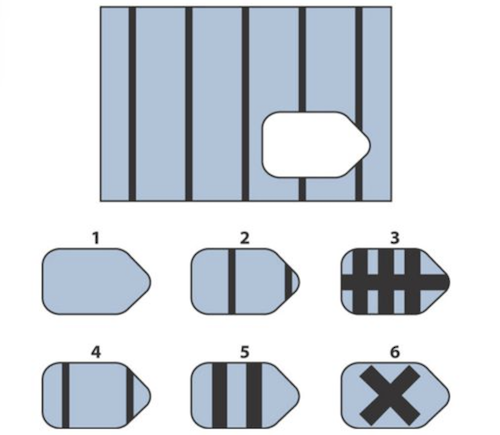The Expert Guide to the Raven IQ Test
/Your search for the expert guide to the Raven IQ Test is over. We have put together a definitive article about the test that will answer all the questions you may have about it, as well as examples of sample questions and ways you can help your child prepare.
Raven IQ Test | Overview
The Raven IQ Test, most commonly referred to as Raven’s Progressive Matrices, is a nonverbal test of cognitive processing skills. This test was originally developed by Dr. John C. Raven in 1936 and was designed to measure the two main components of general intelligence: the ability to make sense of complexity and the ability to store and reproduce information.
Raven’s IQ Test assesses skills such as reasoning abilities which are generally correlated to success in school. It is a multiple choice test that consists of 60 problems for student to solve. The problems become increasingly harder as the test progresses, but they also build upon one another so patterns of reasoning may be determined and established by the student.
Rather than testing for a student’s achievement levels, the Raven assesses cognitive processing and fluid intelligence. This means that the test is unbiased to students regardless of their language, reading abilities, or academic background. The test is made up of questions that have a matrix of multiple shapes, items, or figures. In each matrix, there is one that is missing, and the student must choose from the options to determine which best fits the matrix.
How is the Raven IQ Test Used?
The Raven IQ Test is most commonly used as a general measure of IQ and intelligence, but is also used for admission to Talented and Gifted programs, and other special programs in schools. This test is known for its accuracy and unbiased results.
What’s On the Raven IQ Test?
Raven’s progressive matrices is made up of 60 different multiple choice questions that are listed in the order of their complexity. The problems are presented in the form of a matrix, in 6×6, 4×4, 3×3, or 2×2 squares. The test generally takes about 45 minutes to complete and is given in a group setting.
The Raven IQ Test assesses various components of intelligence, including:
How is the Test Scored?
The test is broken down into one overall score which is provided in a percentile. This percentile is not the same as percent correct, however. The percentile score is an age-based or grade-based score which indicates the percent of the norm group of students who scored lower than the child who took the test.
For example, if your child were to score in the 90th percentile on the Raven’s test, it would indicate that 90% of students scored lower than your child, not that they got 90% of the questions correct.
Although the Raven’s progressive matrices is an IQ test, it was decided that percentiles was a more efficient way to report results versus general IQ score. These percentile scores, however, can easily be converted to standard or IQ scores; a score in the 97th percentile would be equivalent to an IQ score of 130 or above.
While there are other components to take into consideration when determining if a child is gifted, a score in the 97th percentile or above would indicate that they are highly gifted in terms of intelligence.
How Does Raven IQ Test Compare to Other IQ Tests?
There are many other types of IQ tests for kids, however, the Raven Progressive Matrices is often referred to as the golden standard for IQ tests and nonverbal assessments.
Other standardized tests such as the OLSAT, or the Otis-Lennon School Ability Test can take up to 80 minutes, while the Raven takes about half that time. It also does not contain words so does not require the student to be able to read or have their first language be English.
Another common type of IQ test is the KBIT, also known as the Kaufman Brief Intelligence Test. This test is recognized for its speed, typically taking between 15 or 20 minutes, and can be used for people of all ages, not just for school-aged children. While it is beneficial to identify gifted students, it is also utilized to identify people with cognitive or developmental disabilities.
How to Prepare for Raven IQ Test?
As with any type of standardized test, it is important to provide your child with sample questions that would help them get familiar with the matrix format. While you cannot give them the exact problems that would be on the test, there are many sample assessments available that would familiarize them with the types of problems they would encounter.
As the Raven IQ test is nonverbal, it will be necessary to explain to them how it works as well as how they are able to solve for the missing element. A great way to do this is to solve some of the problems out loud for them and explicitly state your thinking. This strategy of “thinking aloud” will help them understand how they might solve these questions as well as how they could problem solve.
The Raven IQ Test is known for its accuracy and unbiased nature when used for assessing intelligence. By becoming familiar with the content and problem types, your child has an excellent chance of being successful on the test.


